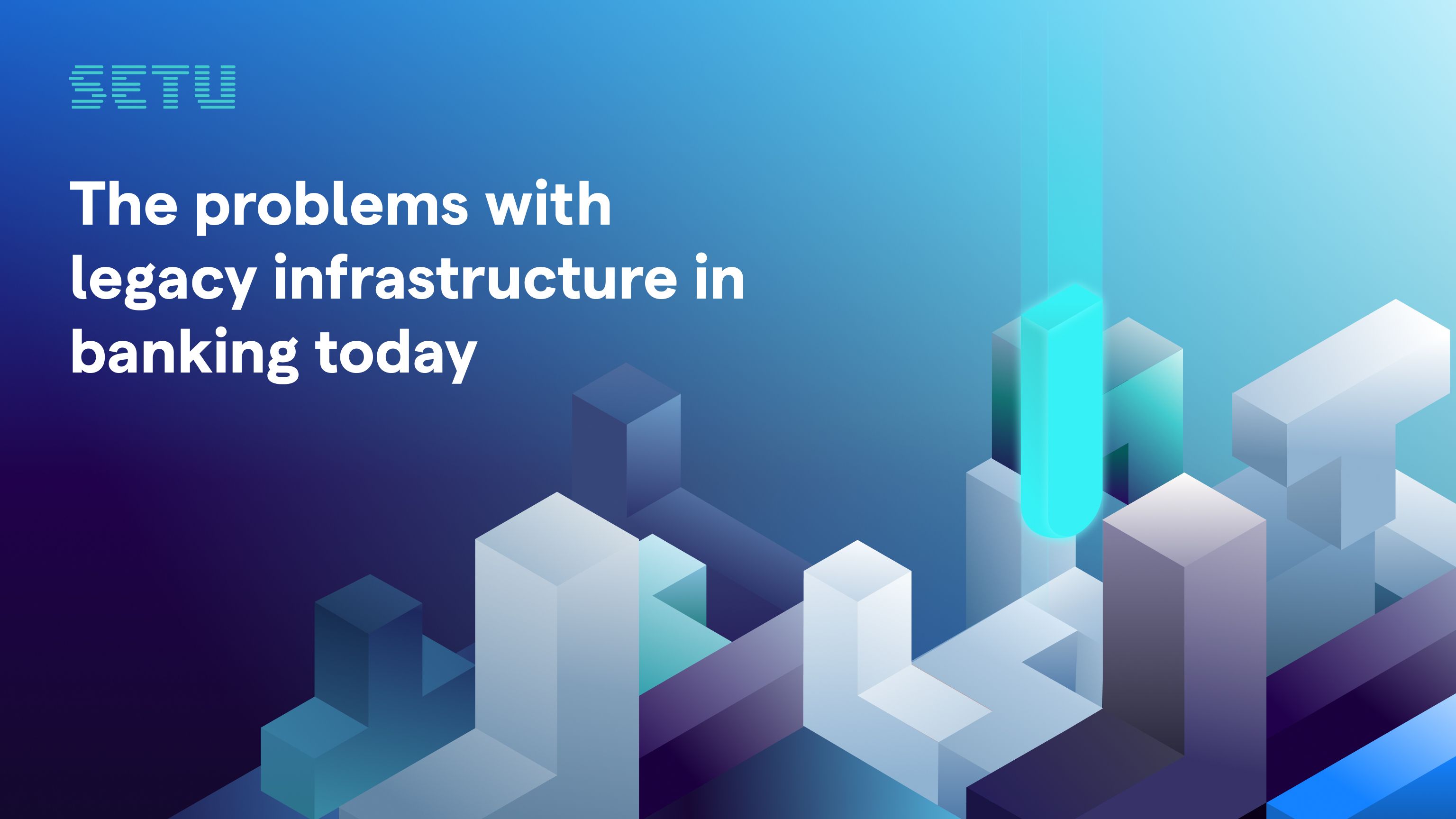Why legacy banking infrastructure needs a lifestyle change but not a facelift
16 Aug 2022 — DESIGN AND EVANGELISM

Legacy. Reputation. Discipline.
Bollywood has time and again brought to the foray conversations around legacies. However, it is not exclusive to the film industry. The same has spilled over to legacy banking infrastructure.
This infra is fundamentally decades-old, the programming languages are from the archives. Its mainframe-based platforms constitute the current core banking system (CBS) setup for India. It is boring for the most part, and especially for the young and the upcoming financial users of the country.
All said and done, this core banking system still supports the bank's backend operations such as account opening, account setup, transaction processing and deposit processing, among others. But these legacy systems can hinder a bank's ability to swiftly deliver newer product experiences, and services due to archived technology, proprietary data models, and limited interoperability with other systems.
The reluctance to abandon older infrastructure hinders transformation. On the contrary, it replaces them with flashy front-end interfaces on top of cumbersome legacy systems.
Access to basic financial products fundamentally asks that the population gets integrated into the formal financial system of the nation. When savings are held, credit is extended, and payments are settled outside the formal system to the advantage of middlemen, entrepreneurship and economic growth suffer.
Retention of customers in the formal financial system requires constant innovation and satisfactory performance. In both instances, the digital financial infrastructure can be designed and implemented so that the significant gaps in financial inclusion between genders, income levels, education levels, and urbanisation levels are reduced.
A PwC assessment identified a handful of key priorities financial institutions must recognise to succeed in this increasingly digitised landscape
-
simplifying their legacy systems
-
updating their information-technology (IT) operating models
-
extending their software-as-a-service (SaaS) credentials beyond the cloud
-
adopting artificial intelligence (AI)
-
and pinning their hopes on the industry's current rate of growth.
However, legacy banking processes across the world find themselves in a decades-old laggard system. It would appear that the digital-first generation of young, tech-savvy customers and the proliferation of fintech startups are exposing this old infrastructure as incapable, inefficient, and redundant.
Applying a lipstick on older infrastructures ultimately offers only little to conceal the limitations of these outdated technologies. It is certainly not a good look when competitors are making comprehensive efforts to build excellent customer experiences that go beyond the surface.
Gartner expects that by 2030, 80 percent of financial organisations would cease to exist or exist just on paper but not successfully participate in major league competition in the industry.
It is simple to identify the causes of these system failures: Legacy technology that was not designed to scale to meet today's cloud-based, interconnected, and anywhere-accessible requirements.
Modernising banking systems and connectivity is essential to India's ambitions to create a cashless, data-driven, real-time payments ecosystem that will serve as a model for other countries. Recent events such as UPI system overloads and regulator’s interventions are bandages for a failing system. The only real solution is to address systemic infrastructure issues, and ongoing efforts to improve the communication security of banking systems are the only real remedy.
The problems that stagnate the legacy infrastructure in banking systems can be categorised as
-
Absence of scalable infrastructure: Each UPI transaction is read and written by a Core Banking Systems (CBS) inside a partner bank. These systems were created over decades and contain technology that, in some cases, constitutes the Internet's earliest building blocks. These legacy systems were not designed to accommodate the massive increase in transaction volumes demanded by the modern market. For context, 686 crore UPI transactions took place in the month of July, 2022 amounting to INR 10.63 lakh crore in value.
-
Enhanced complexity resulting from systems not designed to work together: As banks expanded their business lines to include retail, wholesale, commercial, and institutional products, complexity of the CBS has increased. These banks additionally process transactions from third-party ecosystems like credit bureaus, loan providers, collection agencies, among others. These systems were not designed to interact with one another or to handle the incremental traffic volumes. Through Open Banking, an attempt is being made to standardise this. Initiatives in this direction include Account Aggregator and Open Credit Enablement Network (OCEN).
-
The monolithic legacy architectures: CBS may appear robust functionally, but they are rather difficult to manage, repurpose, and re-architect. In contrast to modern SaaS applications, which are built using microservices and hosted on public clouds, scaling up one component of the CBS system affects every other component. A sudden increase in one CBS system can reverberate throughout the interconnected financial infrastructure chain, causing ripple effects. In order to make the integrations simpler, Setu has managed to create a bundle of solutions that can help banks get past the legacy infrastructures.
-
Reliance on obsolete network and security models: Banks have employed a ‘castle-and-moat’ security infrastructure that erects a fixed perimeter around central CBS assets, therefore protecting this architecture. While this was effective when the majority of transactions originated from bank branches, today it is now performed outside the network perimeter: Internet users can connect from anywhere, at any time, on any device.
To circumvent this, banks have begun searching for non-monolithic applications, one of which is an architecture based on microservices. Banks need to provide APIs that are secure and deploy all APIs in a sandbox environment where fintechs can experiment and develop new offerings.
We have managed to achieve the same at Setu by incorporating a sandbox environment for all its product offerings.
Digital transformation is a consistent effort. Customers always want change. Competitors keep innovating on their products. Regulatory compliances evolve, and technologies advance. There are always going to be fresh threats and obstacles. Banks must be prepared for these alterations.
However, modernisation of legacy systems is rarely a simple answer. Banks must ensure that the systemic transformation process is conducted efficiently, thoroughly, and without sacrificing the client experience.
Similar to a change in lifestyle, this transformation need not occur all at once to be effective and to ensure longevity. Some banks may choose to rip off the band-aid and implement entirely new core technologies all at once. Others may opt for a more gradual transition by constructing new systems alongside their existing ones.
To know how banks can embark towards an easy transition into an API-first journey, contact us here.



